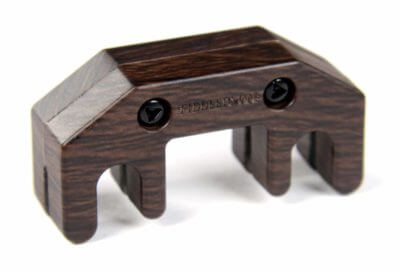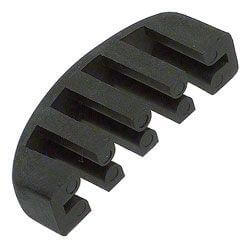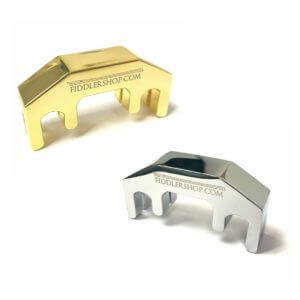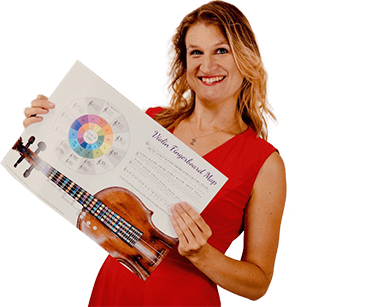Top 3 Violin Practice Mutes to Study Silently
A lot of violin players struggle that they can’t find the right time to practice and are afraid they bother others
A practice mute is the perfect solution!
By placing the mute on the bridge of your violin, you add some weight and block the resonance. You can reduce the sound quite a bit.
There are two types of mutes: practice mutes and orchestra mutes
Practice mutes are heavier and made to study without bothering your neighbours with your playing. Orchestra mutes are made for gentle muting when playing ‘con sordino’ in an orchestra. This article is about practice mutes. Check out my review video on orchestra mutes right here.
How about a silent violin?
Silent violins are electric violins that aren’t silent at all ;). You’ll always hear the sound of the bow over the strings and the instrument will always have some sort of resonance. A normal (acoustic) violin with a heavy mute is just as ‘silent’ as a silent violin. A mute costs around $ 5 to $ 15, while a decent electric violin starts at around $ 500.
Don’t buy a silent violin to practice as it’s an unnecesarily expensive solution. Of course if you’d like to use effects and amplify yourself in a band, knock yourself out with an electric violin.
Disclaimer: Don’t practice with a mute all the time!
Your ‘situation normal’ on the violin should be to play without mute. Your bowing and tone creation skills should be based on the normal sound of the violin. A mute muffles away little mistakes and you might start playing too rough or too loud.
When the sound of your violin without mute starts to surprise you, it’s time to practice more without mute
Some beginners aren’t used to the loud sound of the violin right under your ear. They start muting from the beginning and in this way you don’t learn to play well. Yup, you need to get used to some decibels right under your ear when you’re violin player. And yes, you need to learn to color your sound so it pleases your ears.
Don’t use a mute when you just don’t like how your violin sounds
This is not a good solution. How will you perform? When your violin is too loud or shrill, consider experimenting with warm sounding strings, getting yourself another bow or perhaps even getting a different violin.

Hi! I'm Zlata
Classical violinist helping you overcome technical struggles and play with feeling by improving your bow technique.
No 1 Fiddlerman Iron Violin Practice Mute
 Don’t be scared by the iron, because it’s covered in a layer of rubber. However, always adjust the mute to the thickness of your bridge and make sure that it’s placed firmly (not too firm). The mute can shake off of your violin because of the vibrations and it can damage your instrument when falling. Be a bit careful.
Don’t be scared by the iron, because it’s covered in a layer of rubber. However, always adjust the mute to the thickness of your bridge and make sure that it’s placed firmly (not too firm). The mute can shake off of your violin because of the vibrations and it can damage your instrument when falling. Be a bit careful.
This is a heavy mute, but you’ll still have a realistic sound from your violin, so you can use it very well to practice. It’s not as muffled as a rubber mute (see below) or as shrill sounding as a brass or metal mute.
No 2 Ultra Violin Practice Mute
 It gives your violin a nice warm and mellow sound and it mutes quite well. Considering the low price of around $ 5, this is one of the most popular violin practice mutes. As it’s made completely out of rubber, it can’t damage your instrument.
It gives your violin a nice warm and mellow sound and it mutes quite well. Considering the low price of around $ 5, this is one of the most popular violin practice mutes. As it’s made completely out of rubber, it can’t damage your instrument.
It’s great if you just want to try out playing with a mute and it doesn’t mute too heavy.
A bit of a warning here: it makes the sound of your violin quite different, so don’t get used to this sound by practicing enough without the mute.
If you notice you need more heavy muting, go for the Fiddlerman mute or a full metal mute.
No 3 Brass Violin Practice Mute
 If you need the highest level of muting, go for a full metal or brass mute.
If you need the highest level of muting, go for a full metal or brass mute.
Please note that metal can easily slide off of your bridge and damage your instrument. It doesn’t ‘stick’ like rubber. Be careful when using this type of mute.
Personally I don’t like the sound of these mutes, because it can sound very soft, but shrill. It’s isn’t that much softer than the Fiddlerman mute, which gives a very natural sound, so please think if you really need this high level of muting.
Because it makes the sound of your violin different and mutes heavily, don’t practice too much with a mute like this. It can really mess up your bowing and tone creation.
However, if you really need to practice some scales for intonation purposes, you can use this one.
Do you use a practice mute?
I’d love to read all about what mute you chose and your experiences in the comments below!


I just bought both a rubber mute as well as a metal mute off of amazon. I haven’t tried either of them out yet, but I can’t wait to see how they sound. I’m really bad right now and don’t want to play for my family quite yet until I’m better.
Thanks for your advice and suggestions
Wonderful, Caden, however: make sure to keep practicing enough without mute as well, because you need to be able to adjust yourself to the normal sound of the violin.